#Harpy
Photo
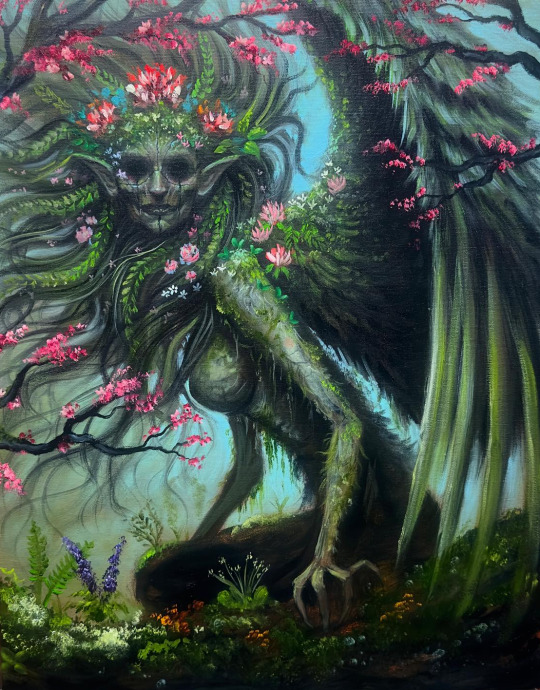
The Forest Harpy, painting by Zack Dunn
#art#illustration#painting#dark art#horror#fantasy#mythology#macabre#creature design#harpy#forest#floral#forest spirit#accidentally posted this to the bug blog sry
489 notes
·
View notes
Text


Ryoko Kui - Harpy
213 notes
·
View notes
Text

melancholy
#fraizer draws#nevermore#ocs#nevverse#art#harpy#fantasy#i missed him and heard Of Monsters and Men ;l;;;l;
29 notes
·
View notes
Text

As you can imagine, there are some species out there that almost everyone loves. Then there are species that most people absolutely hate (don't lump me in with them, though). And of course there are many that people are mostly neutral on, not having much to say about it really. No emotional opinions, no crazy stories or tangents to be found. A large amount of creatures land on this option, as they don't really do much to sway one's thoughts, be it good or bad. Of course, there will always be the few folk who are very vocal of their thoughts, but that doesn't do much to dent the public's mental image of a certain species. But sometimes there are particular creatures who garner incredibly polarizing opinions, where people either really like them or furiously despise them. Hardly any in between! Each person you ask will have their own loud thoughts about it, jumping from "oh they are wonderful!" to "KILL EM ALL, I SAY!" in a single group of people. It's crazy! To have such wildly different opinions on one single species! You wouldn't think it possible, as how can a creature evoke such array of feelings? Well, if you ever met a harpy, I think you would quickly see why.
I feel that harpies are a species that don't need much of an introduction. They are a rather famous species and tales surrounding them have spread far and wide. But to make sure everyone is well aware, harpies are a species of bird that are found in a wide variety of ecosystems. They are highly adaptable and ever so clever, so as long as the climate isn't too extreme, they tend to find a way to make it all work. Obviously, one cannot talk about the harpy without bringing up their appearance, as that is one of the big reasons why this species is so well known. Overall, they have a somewhat owl-like build and appearance to them, but with some differences here and there. They do not have zygodactyl feet, rather more anisodactyl but the back toe is very flexible and capable of rotating. Compared to most other birds, they are actually very dexterous, capable of gripping, twisting and a variety of other things! The other feature they have are the clawed thumbs on their wings. While some see sharp pointy bits and immediately assume weapon, often these digits are for grooming or helping clamber through cluttered branches and tight spaces. And, of course, there is their face. Honestly, I imagine some people think I am stalling since I didn't bring this up first. The face of a harpy looks rather flat compared to other birds, and the feathers atop their heads are very thin long and fine. They hang limply down from their skulls, giving the impression of a flowing mane of hair. Their beaks seem quite small, despite a wide mouth hidden beneath their feathers. And with big eyes like that and easy to see nostrils, some folk see a human face upon these birds. And some other features, of course...
Yes indeed, the harpy has often been seen as a human bird hybrid, with some folk believing that they are some strange mammal bird mix or the result of some terrible curse. Furthering the point are the prominent "breasts" upon their chests, two features that humans cannot seem to tear their eyes away from. Unfortunately, I think they are a big reason why some folk and stories paint harpies in a very....seductive light. Flowing hair, bright lively eyes and large plump breasts, things that drive human males wild (supposedly)! I guess me being a dryad makes me ignorant to the appeal, as we lack the bulbous milk sacs that are so unique to mammals (though some human artists and storytellers may say differently on that). In truth, the two bulbs upon their chests are actually air sacs, used in boosting their calls and songs. Males of the species have much larger ones than the females, which causes endless confusion in humans. These sacs are why harpies are often believed to be an all female species, despite that making no sense (and before you point at dryads, remember we are a species whose majority identify as female). And even when you get someone to remember that there are male and female harpies, they will point to the ones with the biggest pair and say that one is the female. No, the males are the ones with the notably large "bosoms," but believe me that is a battle we will never win. Regardless, the males have larger air sacs to make their songs louder and to puff them up nice and big when it is time for courtship. I am sure there are some humans getting a real kick out of all of this...
When it comes to diet, harpies are opportunistic omnivores that are open to eating....well...anything. Fruit, bugs, nuts, small rodents and anything edible you leave lying around. Though their small beaks are not suitable for cracking open hard shells or tearing open carcasses, they usually find a work around. One is their wide mouths and stretching throats, which allow them to straight up swallow a lot of their food. A harpy doesn't need the cutlery to chop up a dead rabbit, they just throw their heads back and choke the whole thing down in one go. Always kind of funny to put that image side by side with the seductive, beautiful bird maidens that people like to fantasize them as. Your lovely bird woman is downing a rotting pork bone right now. And good to bring up food like that, because harpies will absolutely pick stuff out of the garbage. In fact, it is why they tend to set up their nests near villages and cities, as there is always something edible being thrown away. And if it isn't being tossed out, they may figure out a way to get anyways.
One of the reasons harpies are so well known and can cause people to have wildly different opinions about them is their cleverness and trickery. They are incredibly smart birds, able to learn from watching others, memorize patterns, use tools and mimic behaviors. For example, their beaks are not well equipped for cracking tough nuts, so harpies have learned to dump these foods onto roads with heavy carriage and caravan traffic. The horses and wheels will do the job, and they will swoop down when all is clear to collect their reward. They can also learn schedules, like when a farmer goes to feed their livestock every day, and when best to sneak in to grab some grains for themselves. On top of this big brain is incredibly vocal mimicry, which allows them to regurgitate pretty much any sound they have ever heard. And this includes speech! Harpies can mimic the sounds of dogs barking, swords clashing, children playing, and phrases they have heard while sitting upon the roof tops. A harpy can replicate a voice so well, that they tend to fool people who cannot see them! If a harpy was in another room out of sight, and they called to you in the voice of your partner, you wouldn't suspect it came from a bird! You wouldn't think twice! With incredible memories and smarts, they can remember dozens of words and phrases, and spit them back out flawlessly.
However, I must dampen the excitement for a moment. The thing I want to point out is that while harpies can mimic speech and sound like they can talk like any other dryad or human, they cannot actually talk. At least not in the way we interpret it. Harpies are not speaking or trying to convey the actual meaning of these words, they are simply spitting out noises that they have heard. They don't actually know the definition of these words, they just know the usual response to these sounds. Like if I were to say, "hey, can you hand me that key?" in front of a harpy enough times, they may start saying it too. But the thing is, they aren't asking if you would hand them an actual key. Most likely, they see you giving me a shiny object, and think this is the phrase that makes others hand over shiny things. They don't understand it as a request for a single, specific object, they don't even know it is a question. To them, there is no "yes or no" to come from this, they say the noise and the shiny toy is immediately handed over. If not, they get confused or agitated. So if you ever go to a circus or show where they present a fully "fluent" harpy who can sure talk and act like a real deal person, remember that it is the result of countless hours of training and a very tight and staged script. "But Chlora, they sometimes pick out random people in the crowd to talk to them, and they follow along without a hitch!" Yeah, "random." Do you seriously need to have a dryad tell you what a "plant" is?
This vocal mimicry is used for a variety of things, be it wooing mates with elaborate songs and performances, or scaring away predators. Harpies will memorize the sound of dangerous animals in the area, and use them accordingly to spook potential threats. If someone is getting too close for comfort, the rattle of a manticore's scales will certainly make them change their minds! They may even use the sounds of people to scare pests and problems, as a human voice startles quite a few critters! Combined with their wit, and you will find scenarios where harpies found that particular phrases or noises can lead to some interesting results. A good example came from a village that was thrown into a full blown panic when the horn from the watchtower sounded. This alarm was used for approaching dragons or armies, and the people were ready to start a full scale evacuation. Thankfully, before things got too out of hand, the folks in the watch tower spotted the harpies nearby and declared a false alarm. It turns out the birds learned that this big horn noise made all the little people scamper away and leave their valuable tasty things behind.
Another case revolved around a trade route that was besieged by bandits. A nasty gang had set up shop in a wooded part of the road, where they could hide and ambush lone traders. Each time, they would loudly demand that the victim leave all their belongings behind and run, or face the consequences. If you emptied your pockets and fled, they would let you live. Refuse, and they would gut you. Many carts and traders were robbed, but eventually authorities tracked down the bandits and captured them. But days after the arrest, another robbery occurred. And then another, and another. People believed that the guards had taken the wrong men or missed a few of them. Only after thorough investigation did they find a group of harpies who had learned to mimic the loud demands of the bandits, and noticed that this noise made people drop their shinies and run. This revelation also brought to mind the cases where the "robbers" attacked fruit carts and other food laden travelers, despite these targets carrying very little coin. But when threatened with your life, a lot of folk don't stop to think if it is truly bloodthirsty criminals or a bird that is screwing with you to get some free apples.
With this trickery and mimicry in mind, you can start to see why some people would like them or hate them. Harpies are very capable of mischief, and are always fans of easy food. If they can find a way to rob a fruit stand, or swipe a meal from a distracted customer, they will gladly do so. They also like shiny or colorful objects to decorate their nests with, so they will totally fly off with trinkets and coins if they see an opening. Then there is the fact that harpies are incredibly sociable and in need of enrichment, so they do a lot of things for fun or to strengthen bonds with their flock. Groups of harpies can come up with their own games and ideas of "play" which may or may not be fun for the people affected by them. Some games can seem like them just screwing with people, stealing things or being nasty little vandals. They grow close to other harpies and other creatures who are nice to them, and can absolutely hold a grudge if someone wrongs them. Their memory can be applied to faces, and they will totally remember your face if you do something to anger them. In a way, harpies are also mimics when it comes to behavior, as they will copy the way you treat them and do the same to you. Villages with good relations with local harpies typically are very kind to the birds and do not antagonize them, while places terrorized by furious birds are probably guilty of doing something heinous to them previously. So if you find someone who likes harpies, then the birds probably like them. If you see someone who hates them, know that the harpies hate them too.
As I mentioned previously, harpies grow close to the beings who are nice to them and join them in their socialization. This means that anyone can create a bond with a harpy, provided they put in the effort and give plenty of gifts. Offerings of food and trinkets can get their attention, as well as helping them when they are in a bind. Rewarding certain behaviors can even lead to things like trade, where harpies will bring you goodies that you like to get prizes in return. I have met many folk who have developed relations with the local harpies, and find them very good company. Joining in their games or even doing things for them to watch with amusement, there is plenty on can do to make harpies interested in you. However, before you get it in your head that you want a pet harpy, know this: harpies can live for over seventy years, need a lot of social interaction and are very easily stressed. These animals are not toys, they are not things you can push aside when you get bored with them. Harpies need to socialize, they need to play and they need to make sure their bonds are strong. Ignoring them, leaving them for long periods of time or not treating them right will agitate them, stress them and cause their health and mind to deteriorate. Cages are also a terrible thing for them, as they need lots of space. They also get jealous very easily if they really like you and can throw fits when they feel left out. So when it comes to harpies as pets: absolutely not! If you want harpy friends, look to your local flock of harpies and try to strike up relations with them. Harpies make good neighbors and friends, not pets!
Chlora Myron
Dryad Natural Historian
-----------------------------------------------------
"Harpy" (also why is the picture so dang big)
Harpies were inevitable, and I am sure some folk were expecting something more wild, but I absolutely adore this look. I find them very charming! Maybe you will get your more monstrous versions later!
Also I am positive I forgot some things in this entry. But there is always a chance for further ones!
17 notes
·
View notes
Text

I really liked how this sticker turned out, so I'm posting it separately 🐍🕊️
27K notes
·
View notes
Text

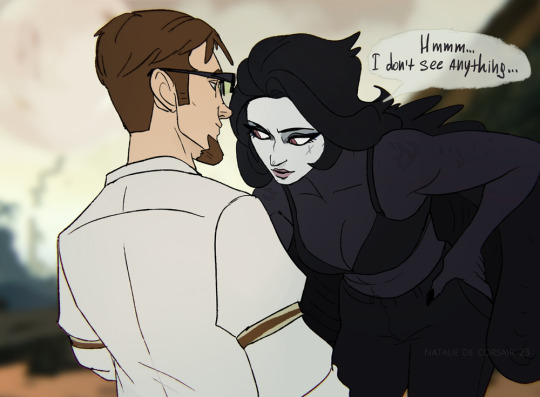
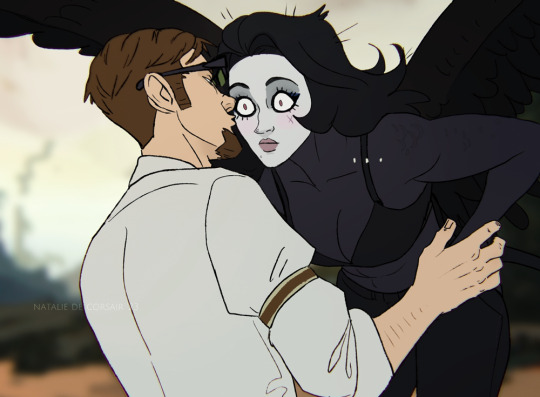

How to prank your siren gf (in a loving way)
An actual beetle comic is here xD
Other comic is here
Main post with them is here
Info is here
You can find more arts and comics by hashtag Pticenoga - or on my Patreon
#artists on tumblr#pticenoga#harpy#siren#borderlands#borderlands au#tales from the borderlands#vaughn#art#comic#illustration#silly#funny#expressions#tftbl#natalie de corsair#nataliedecorsair
9K notes
·
View notes
Text
MAGIMATE

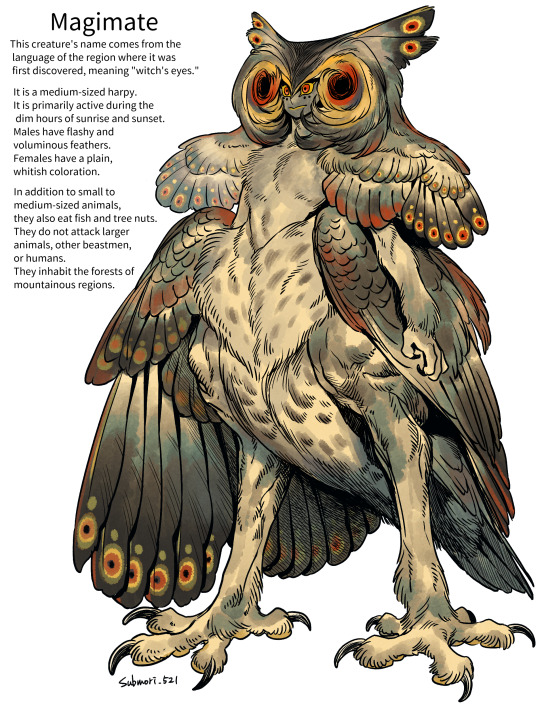
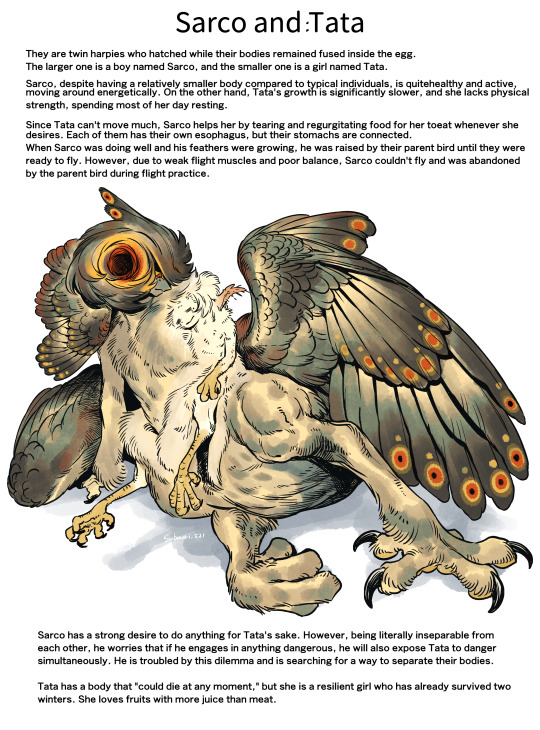



#original character#original#character design#digital illustration#creature#人外#monster#harpy#harpy oc#artwork#illustration
18K notes
·
View notes
Text

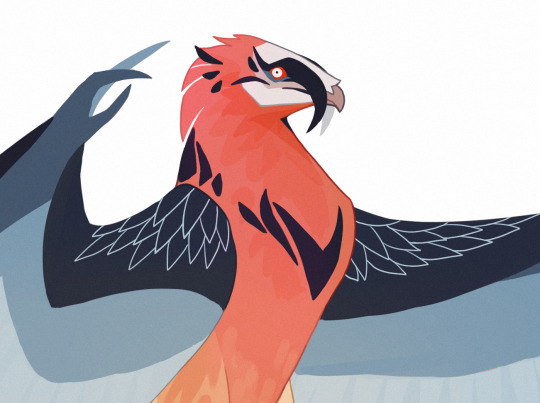
5K notes
·
View notes
Text

the crawling beast of the earth
7K notes
·
View notes
Text

a shortcut through the swamp
#orignal character#oc#harpy dude#slavic folklore#slavic mythology#illustration#dark art#art#harpy#artists on tumblr#artwins#severin#seva
7K notes
·
View notes
Text

✦ Harpy ✦
#artists on tumblr#small artist#digital art#art#drawing#illustration#original character#harpy#greek mythology#monster girl#bird girl#wings
4K notes
·
View notes
Photo
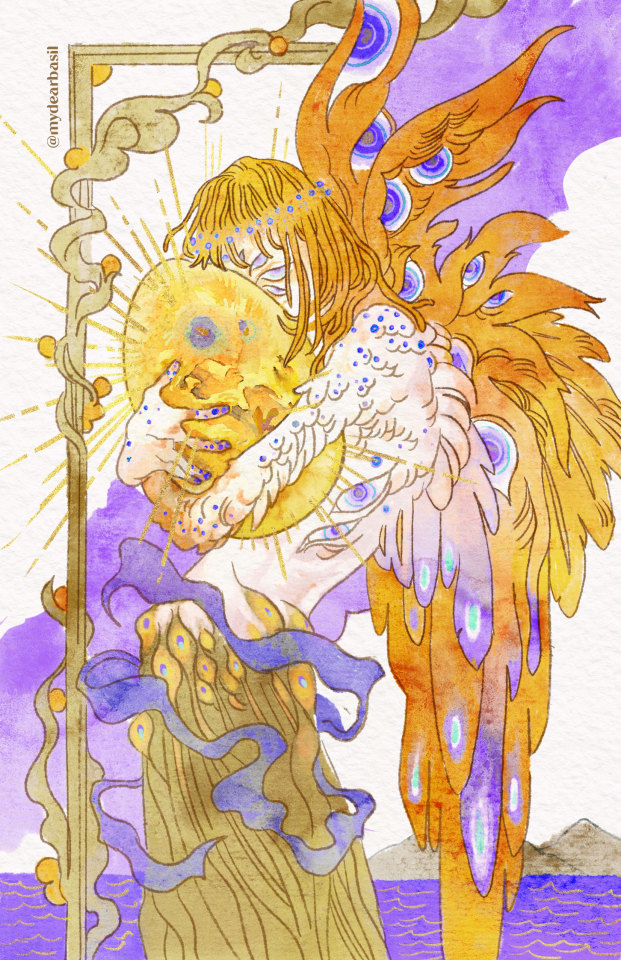
they can be your angle or your devil ...!
13K notes
·
View notes
Text

Monster Tidbits - Harpy
184 notes
·
View notes
Photo
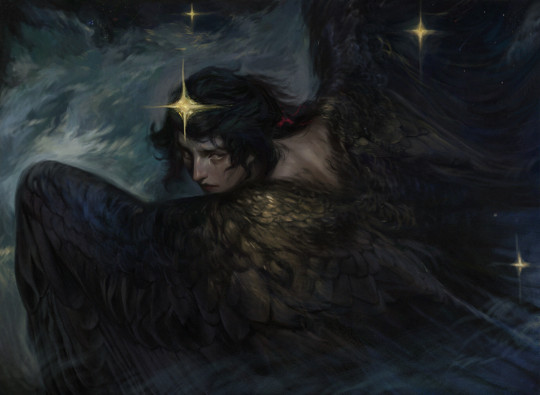
104 by Eldar Akmanaev
2K notes
·
View notes
Text
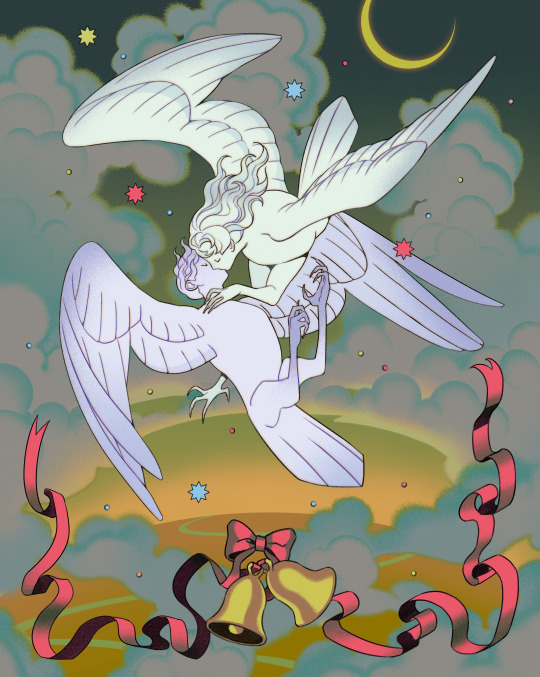
💒🔔🌙✨🕊️
14K notes
·
View notes
Text



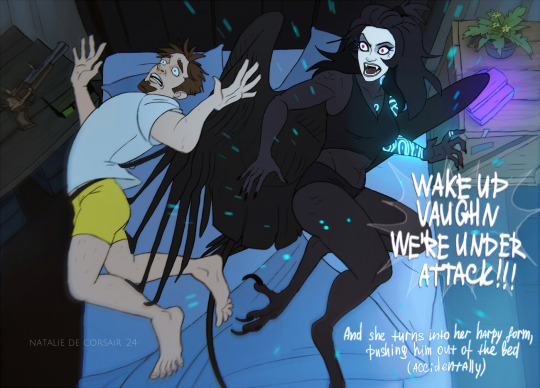

Comic about sleeping + a silly bonus
Information about them is here
More comics by the Pticenoga tag
Don't forget to find the frog
#pticenoga#harpy#siren#artists on tumblr#comic#illustration#funny#silly#vaughn#borderlands#art#borderlands au#tales from the borderlands#sleeping#transformation#nataliedecorsair#natalie de corsair
4K notes
·
View notes